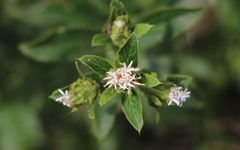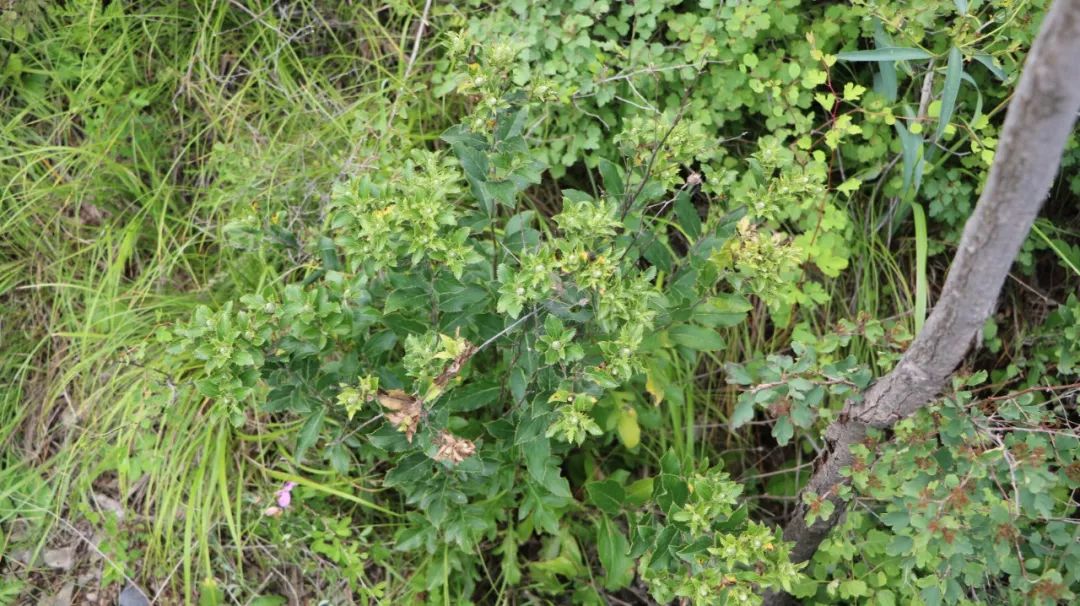
Atractylodes lancea (Thunb.) DC Habitat
Atractylodes refers to the medicinal material derived from the dried rhizomes of the Asteraceae family plants, specifically Atractylodes lancea (Thunb.) DC. or Atractylodes chinensis (DC.) Koidz.
Atractylodes is a commonly used medicinal material in clinical practice. It has a pungent and aromatic nature, with the ability to dry dampness, strengthen the spleen, dispel wind, and scatter cold, making it a key herb for addressing dampness obstructing the spleen. Therefore, many prescriptions during the current pandemic include this herb. (The plant images are all of Atractylodes chinensis.)
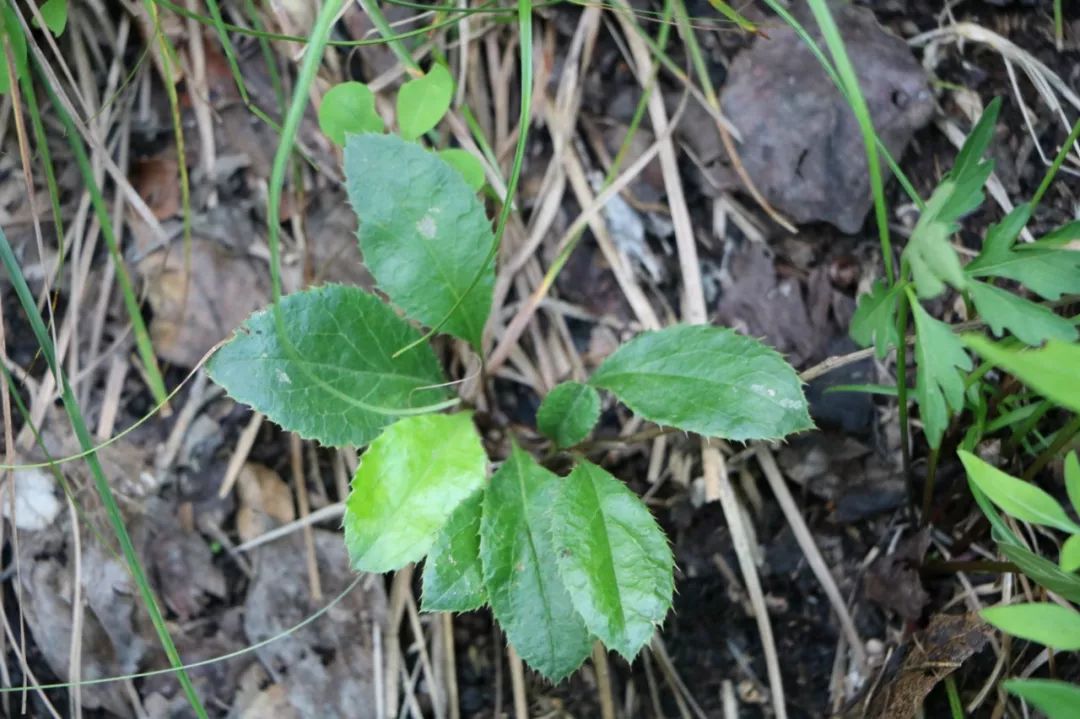
Atractylodes Seedling Stage
Today, we will delve deeply into Atractylodes. First, from a botanical perspective, Atractylodes is a perennial herb belonging to the Asteraceae family. The classification of the Atractylodes genus has been historically chaotic due to transitional and unstable variations.
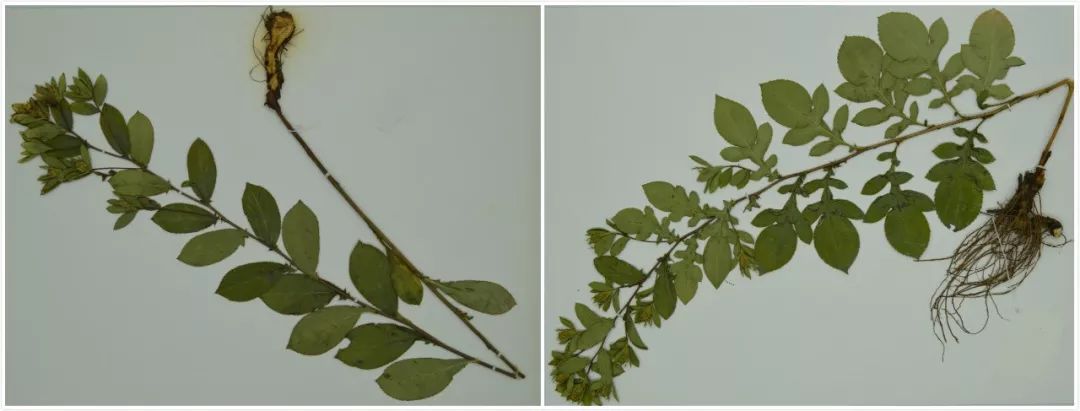
Atractylodes with Variable Leaf Shapes
In China, there are mainly five species: Atractylodes lancea, Bai Zhu (White Atractylodes), Guan Atractylodes, Chao Xian Atractylodes, and Oxi Atractylodes. The plant catalog merges Atractylodes chinensis into Atractylodes lancea, classifying them as one species, which differs from the Chinese Pharmacopoeia and mainstream plant classification.
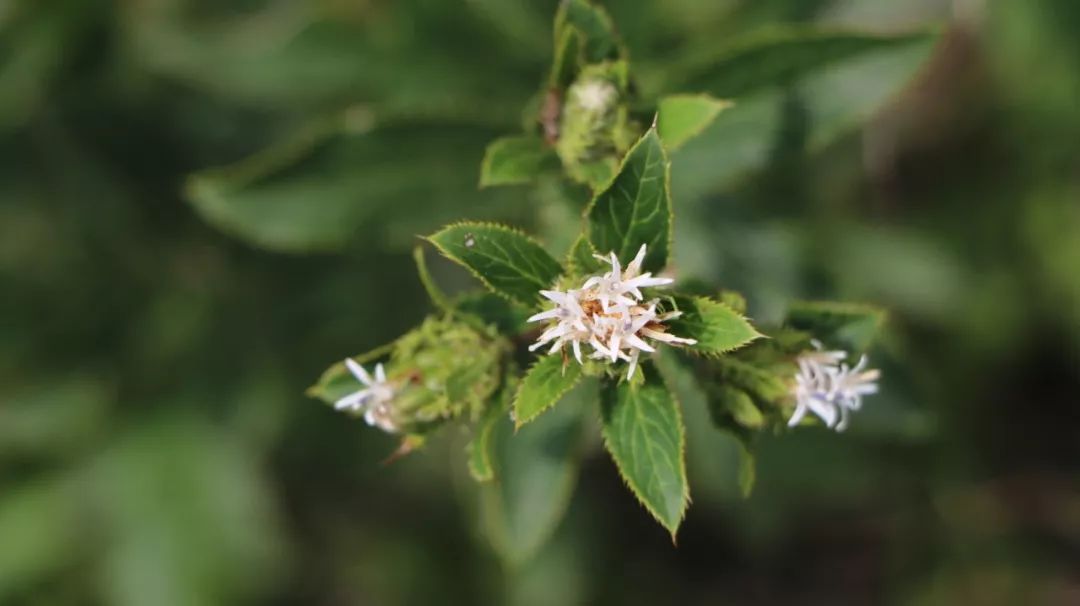
This is the general position of Atractylodes in plant taxonomy. Now, let’s discuss the history of its medicinal use. In ancient times, Atractylodes was not known by this name; both Bai Zhu and Atractylodes were referred to as “Zhu”. The earliest record of “Zhu” in medicinal texts is found in the “Fifty-Two Diseases Formulas”. Later, in the Liang Dynasty, Tao Hongjing mentioned in the “Record of Famous Physicians” that “Zhu” can be divided into white (i.e., Bai Zhu) and red (i.e., Atractylodes), hence Atractylodes is also known as Chi Zhu (Red Atractylodes).
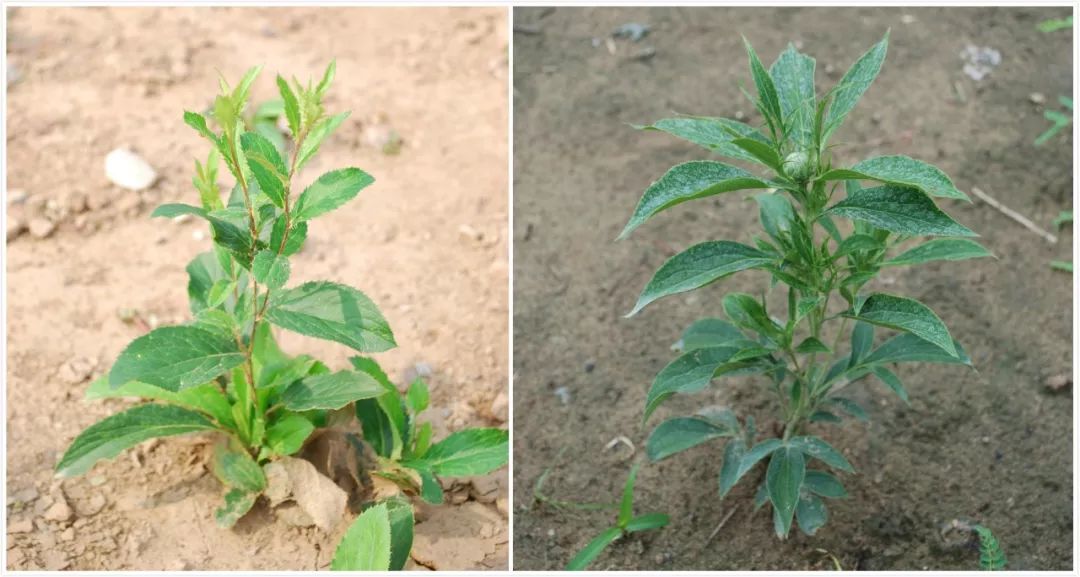
Atractylodes (left) and Bai Zhu (right) Plant Morphology
Regarding the earliest mention of “Zhu”, historical herbal texts and current research have varied opinions. Before the Tang and Song Dynasties, Bai Zhu and Atractylodes were often confused, leading to frequent misuses of Bai Zhu and Atractylodes. It was not until the Northern Song Dynasty that the distinction between Atractylodes and Bai Zhu began to be emphasized, and subsequently, herbalists began to document them separately, clarifying the medicinal use of Atractylodes after the Northern Song Dynasty.

Atractylodes Flowering Process
For the medicinal material of Atractylodes, although it is classified as one species, Atractylodes lancea (Thunb.) DC, it has traditionally been sourced from two different plant origins: Atractylodes lancea (Thunb.) DC. and Atractylodes chinensis (DC.) Koidz. While they are botanically similar, there are significant differences in their medicinal applications.
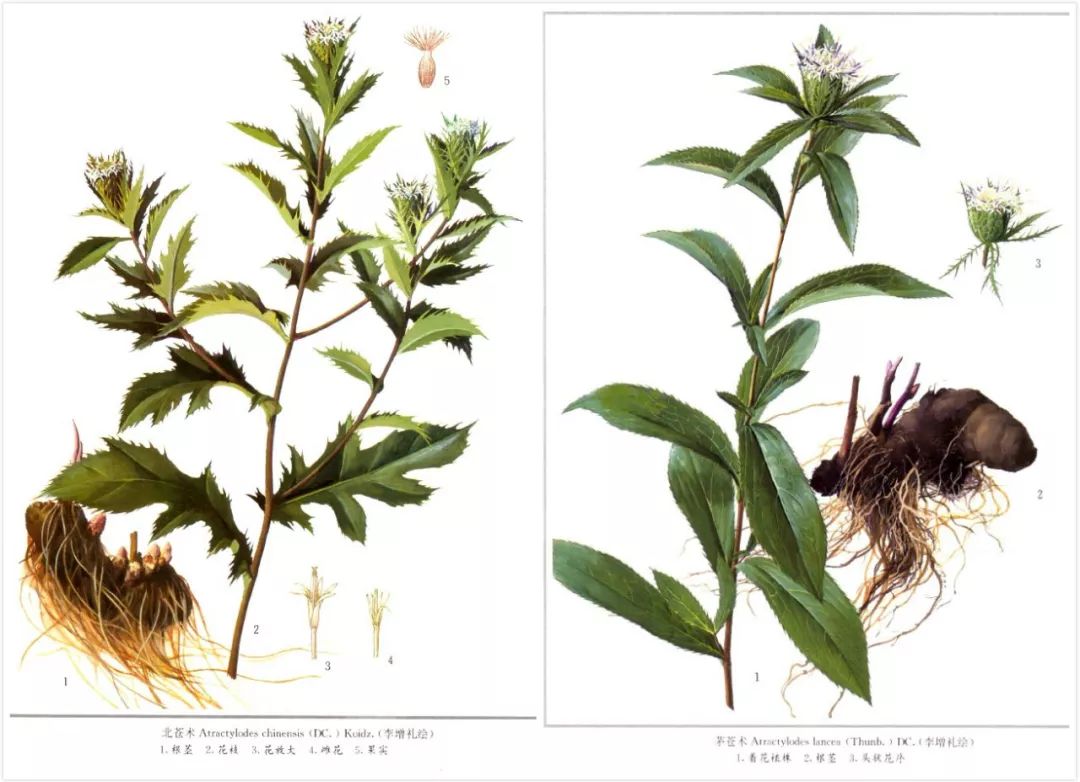
Atractylodes chinensis (left) and Atractylodes lancea (right) Hand-drawn Illustration
Atractylodes lancea primarily grows in the southern regions, particularly around the Mao Mountain area (now Jurong, Jiangsu), also known as Southern Atractylodes. Southern Atractylodes is significantly superior in terms of authenticity and quality compared to Northern Atractylodes, with dense oil chambers in its cross-section and higher volatile oil content, resulting in the formation of fine needle-like crystals, hence its nickname “Mao Atractylodes” (Hairy Atractylodes). Its flavor is aromatic, slightly sweet, and then bitter and pungent, making it the highest grade of Atractylodes medicinal material.
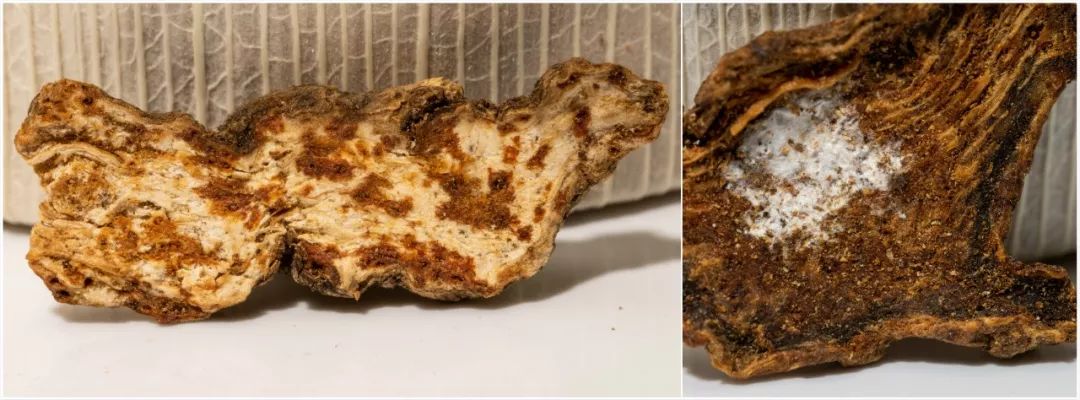
Image of Atractylodes lancea Slices, Image from Teacher Wang Zeguang
However, the early destruction of local wild resources of Atractylodes lancea has led to its gradual endangerment, making it difficult to form a market. Consequently, corresponding specimens are hard to collect, let alone clinical use; it can only quietly lie in the Chinese Pharmacopoeia as a display.
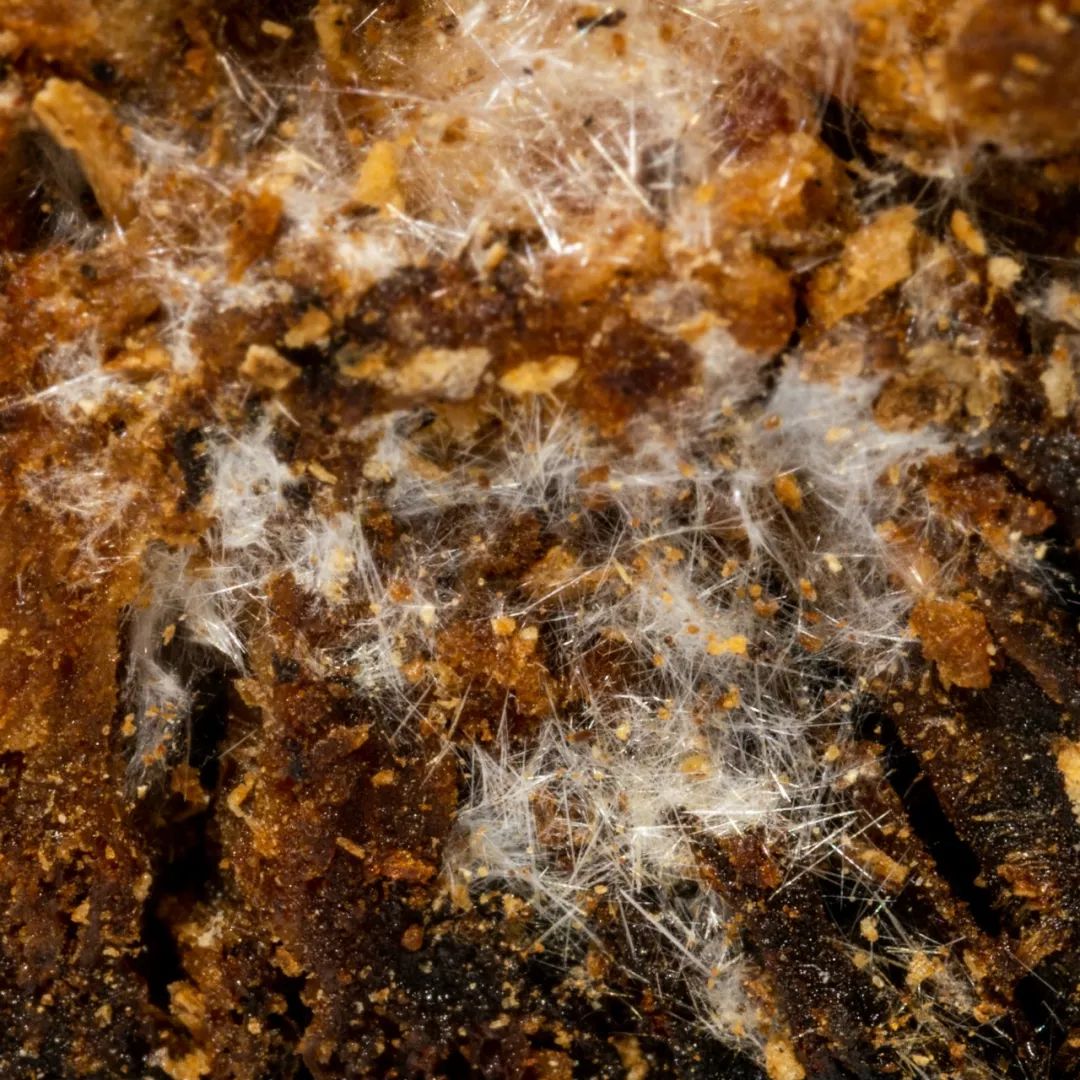
Magnified Crystals of Atractylodes lancea, Image from Teacher Wang Zeguang
It is worth noting that the subspecies of Atractylodes lancea, known as Luotian Atractylodes, has been successfully cultivated and is widely planted in Luotian County and Yingshan County in Hubei, producing high-quality material. However, due to high cultivation costs, it lacks competitiveness in the domestic market and is often exported at high prices to Japan and Korea for use, resulting in its rare use domestically.
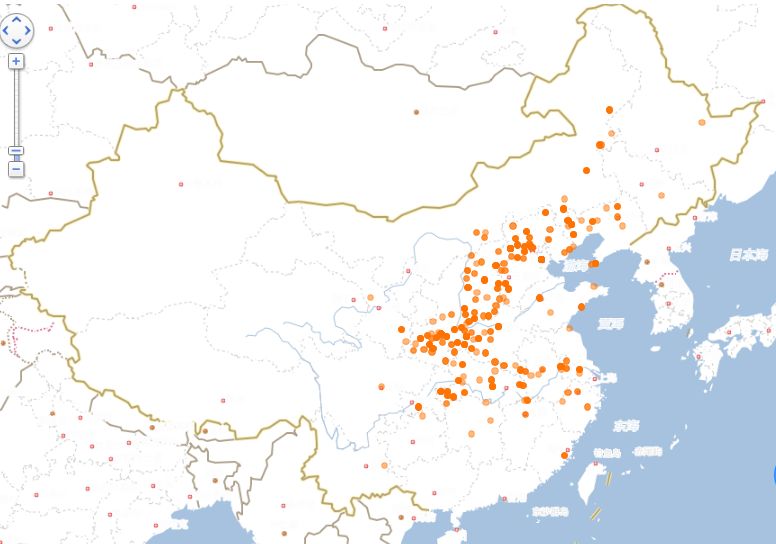
Distribution Map of Atractylodes Resources
Due to its rarity, Atractylodes lancea is more valuable than Atractylodes chinensis, which, while not as valuable, has a relatively abundant wild resource and good quality. Atractylodes chinensis is mainly distributed in most northern regions of China, particularly in Chengde, Hebei, and Inner Mongolia, with Chengde being the primary production area. Due to the inability to meet the production capacity of Atractylodes lancea, Atractylodes chinensis has become the main source of Atractylodes medicinal material used today.
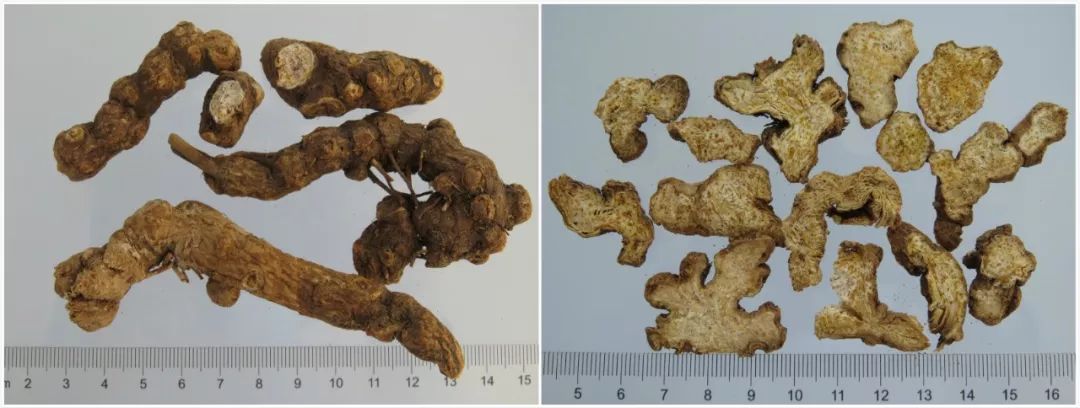
Wild Atractylodes chinensis Roots
We know that the cultivation history of Bai Zhu is long, dating back to the Ming and Qing Dynasties, but the cultivation of Atractylodes has only emerged in recent years. Historically, Atractylodes chinensis has always been supplied to clinics in wild form, but as with any resource, there is a natural limit. With the increasing depletion of wild Atractylodes, the larger specimens have been harvested, and in recent years, the wild Atractylodes medicinal materials have become smaller, leading to rising prices.
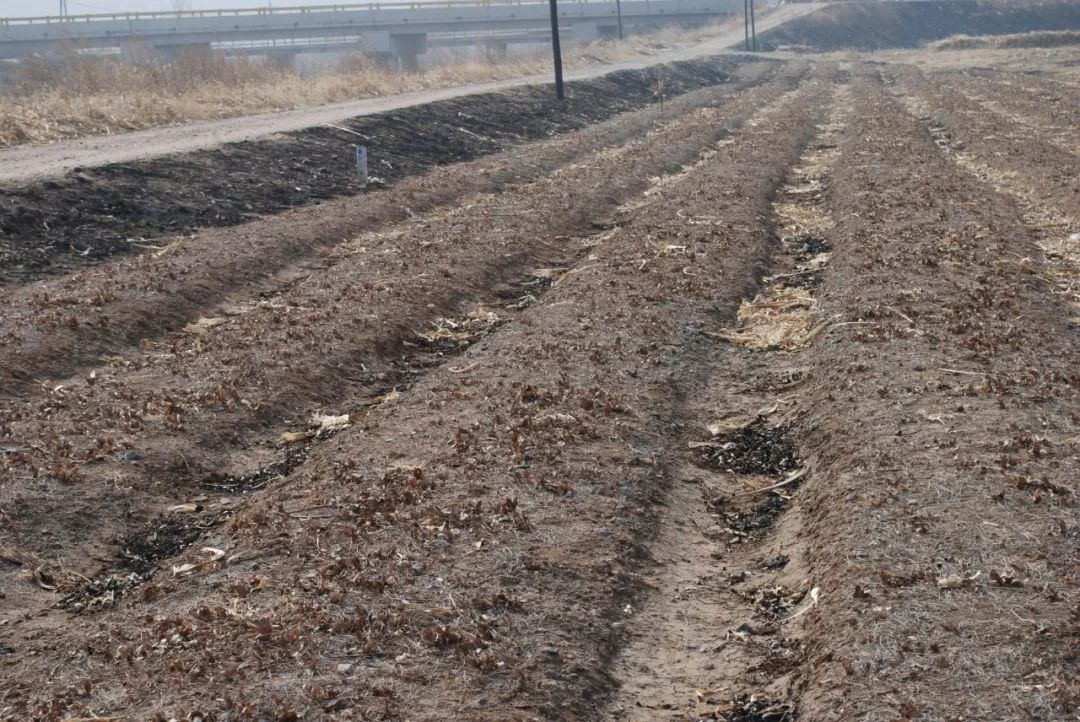
Wild Atractylodes chinensis Raw Material and Slices
Driven by profit, the cultivation of Atractylodes chinensis has gradually developed in recent years. The artificial cultivation of Atractylodes can be accurately traced back to 2012, when Chengde Jingfukang Pharmaceutical was the first to gradually develop Atractylodes cultivation with local farmers. Even Heilongjiang in the northeast has begun to introduce and cultivate it from the mountains. Unfortunately, due to the high distribution of Guan Atractylodes in the area, many locals have incorrectly introduced it without professional guidance.
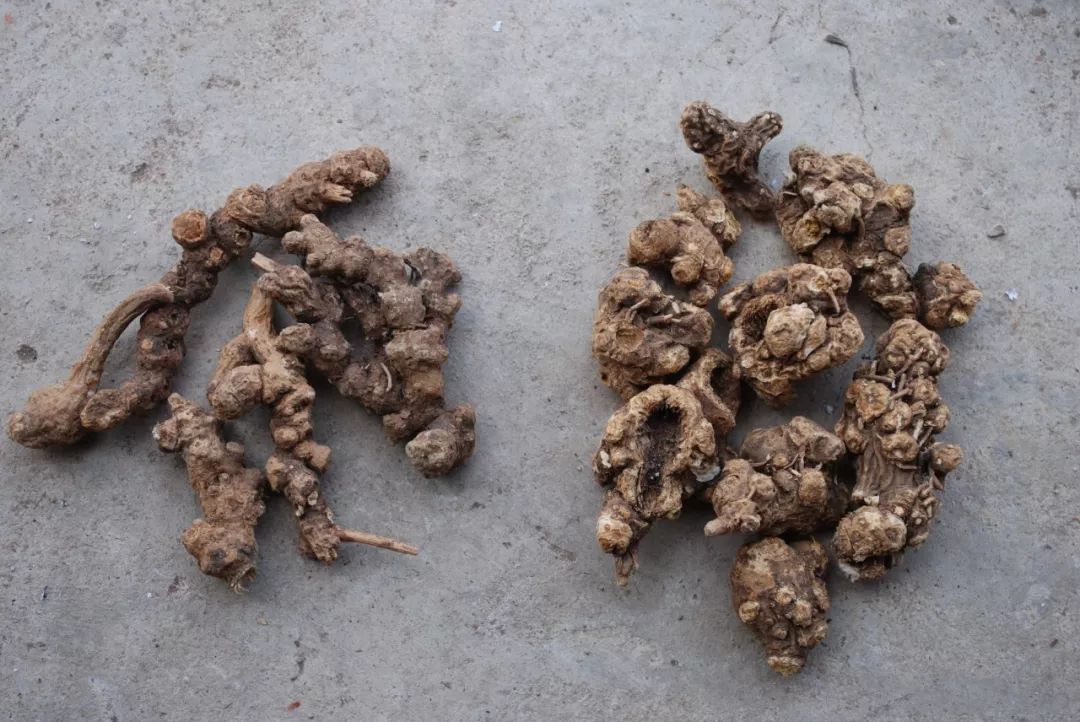
Seedling Bed for Cultivating Atractylodes in Chengde
Currently, in Chengde, Hebei, the cultivation of Atractylodes chinensis requires at least four years to form a marketable medicinal material. Initially, the focus is on collecting seeds, which can sell for 800-1000 yuan per kilogram, yielding high profits per mu. Therefore, the cultivation of Atractylodes as a commodity has only just begun in recent years, and it is easy to predict that the future use of Atractylodes will primarily rely on cultivated sources.
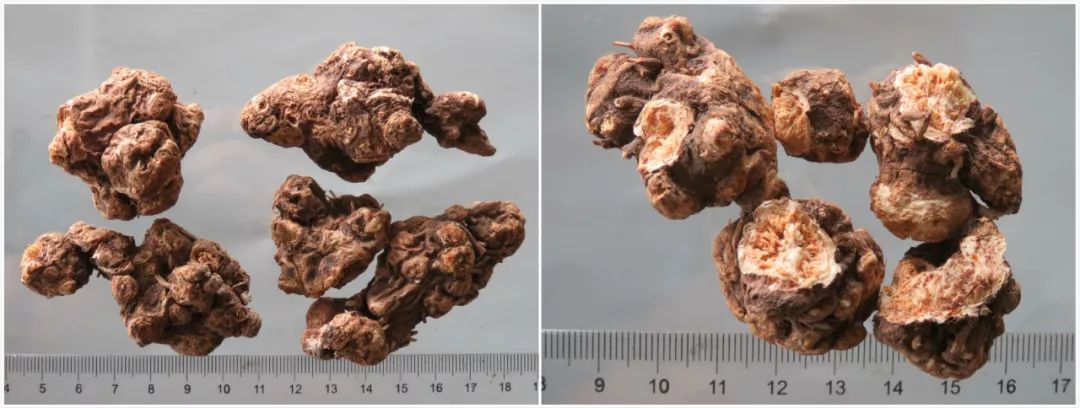
Comparison of Wild Atractylodes (left) and Cultivated Atractylodes (right) Medicinal Materials
Thus, the medicinal material of Atractylodes is currently undergoing a transformation from wild to cultivated sources, allowing for some protection of wild resources. Cultivated Atractylodes can meet the pharmacopoeia content requirements after four years of cultivation, but the cross-section of cultivated Atractylodes is dense, which does not conform to the pharmacopoeia’s requirement for a loose texture. Companies selling slices still primarily use wild sources or mix a certain proportion of cultivated slices for sale. Only in raw material extraction enterprises is there a gradual increase in the use of cultivated sources.

Cultivated Atractylodes Medicinal Material and Cross-section
Cultivated Atractylodes has certain differences in appearance compared to wild Atractylodes. Cultivated Atractylodes typically appears in clumps, with a dense cross-section and a heavier texture. In contrast, wild specimens are often nodular and cylindrical, with scattered stem remnants, and a loose cross-section, allowing for differentiation.
It is also worth mentioning Guan Atractylodes (Atractylodes japonica Koidz.ex Kitam), named for its wild resources primarily distributed in the Heilongjiang area north of the Shanhaiguan Pass. Guan Atractylodes is not included in the 2015 edition of the Chinese Pharmacopoeia and is used as a medicinal herb in only a few cities and counties in Northeast China. It is a confusing substitute for genuine Atractylodes, and in Korea and Japan, Guan Atractylodes is used as “Bai Zhu”. According to literature, Guan Atractylodes has significant differences in chemical composition compared to genuine Atractylodes lancea and Atractylodes chinensis, and should not be used as a substitute for Atractylodes.
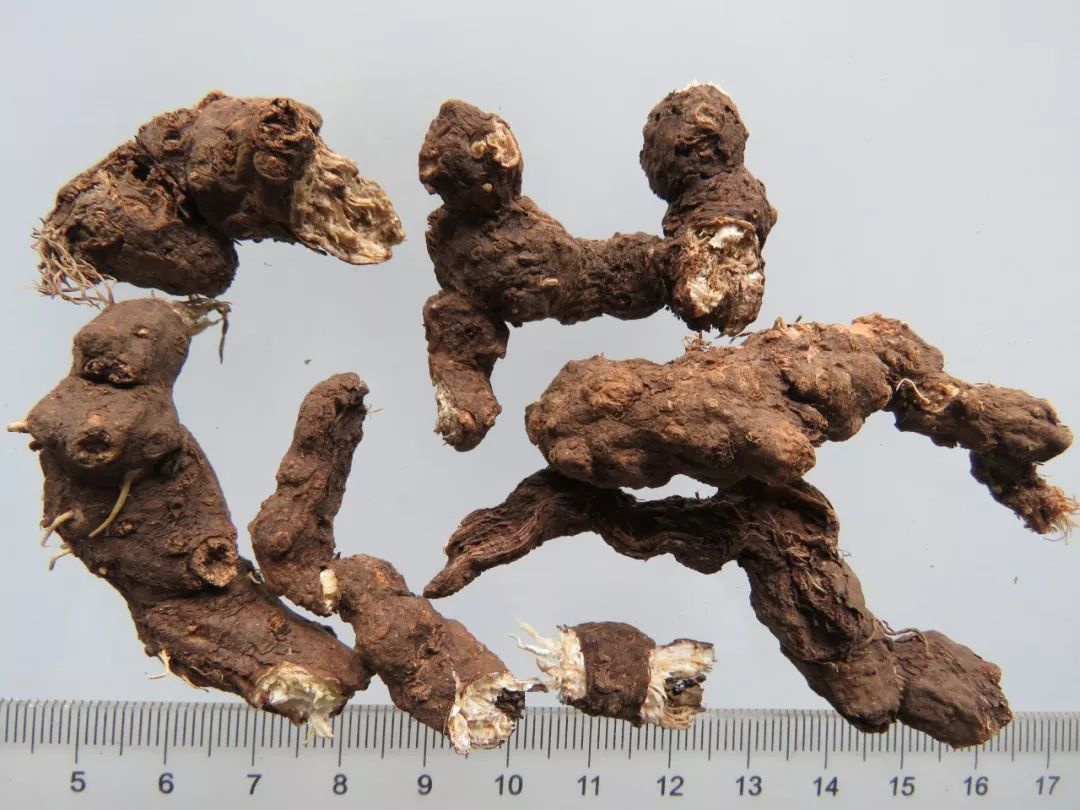
Guan Atractylodes Medicinal Material (Unprocessed)
During times of high demand for Atractylodes, there are instances where Guan Atractylodes is falsely passed off as genuine Atractylodes. However, Guan Atractylodes has strong fibrous properties, a loose texture, and a cross-section with few or no oil spots, resulting in a milder flavor. Despite its relatively abundant wild resources and lower price, some pharmaceutical companies may take risks by slicing and stir-frying it to mask the color of the cross-section, attempting to pass it off as genuine stir-fried Atractylodes.

